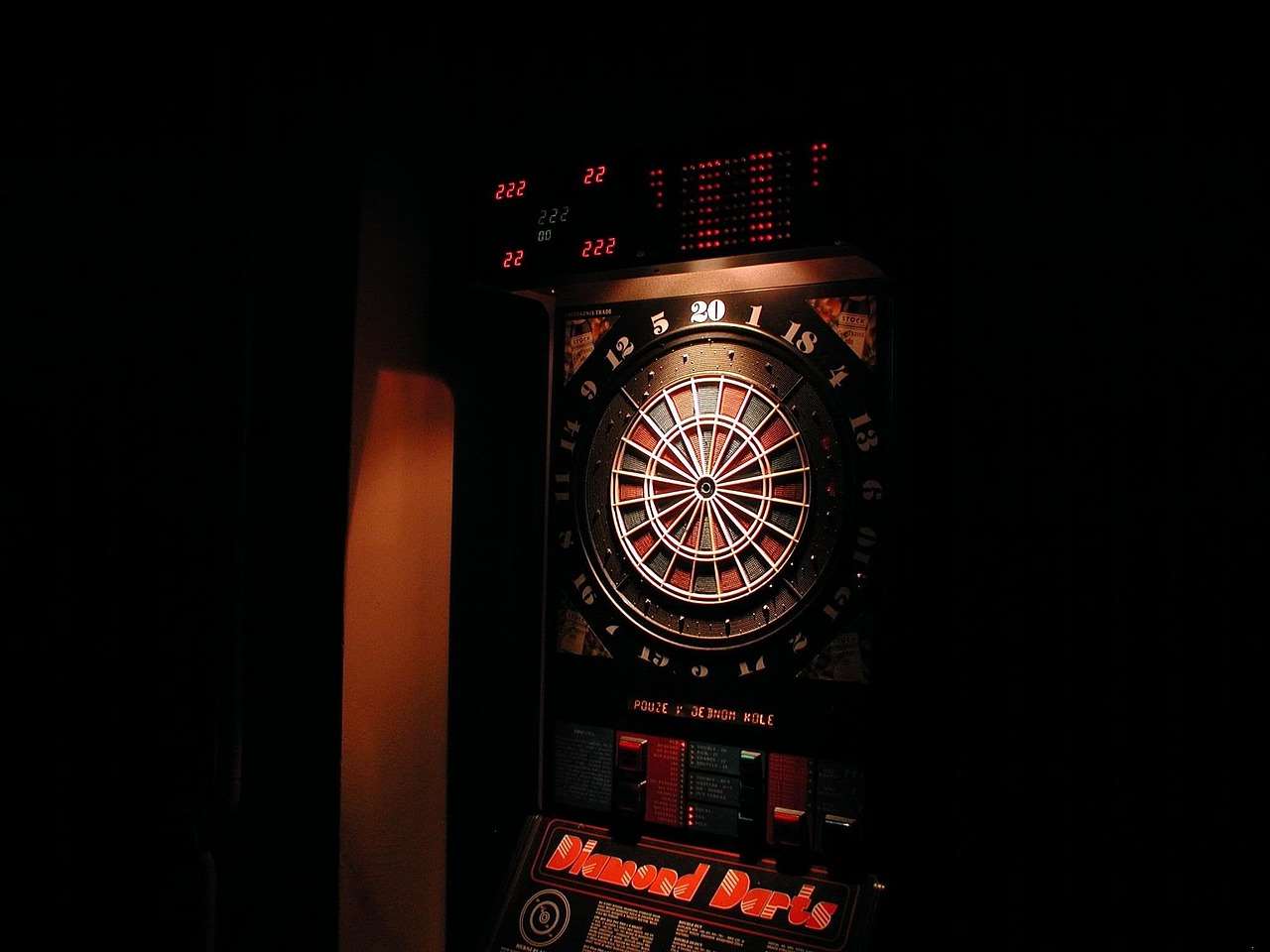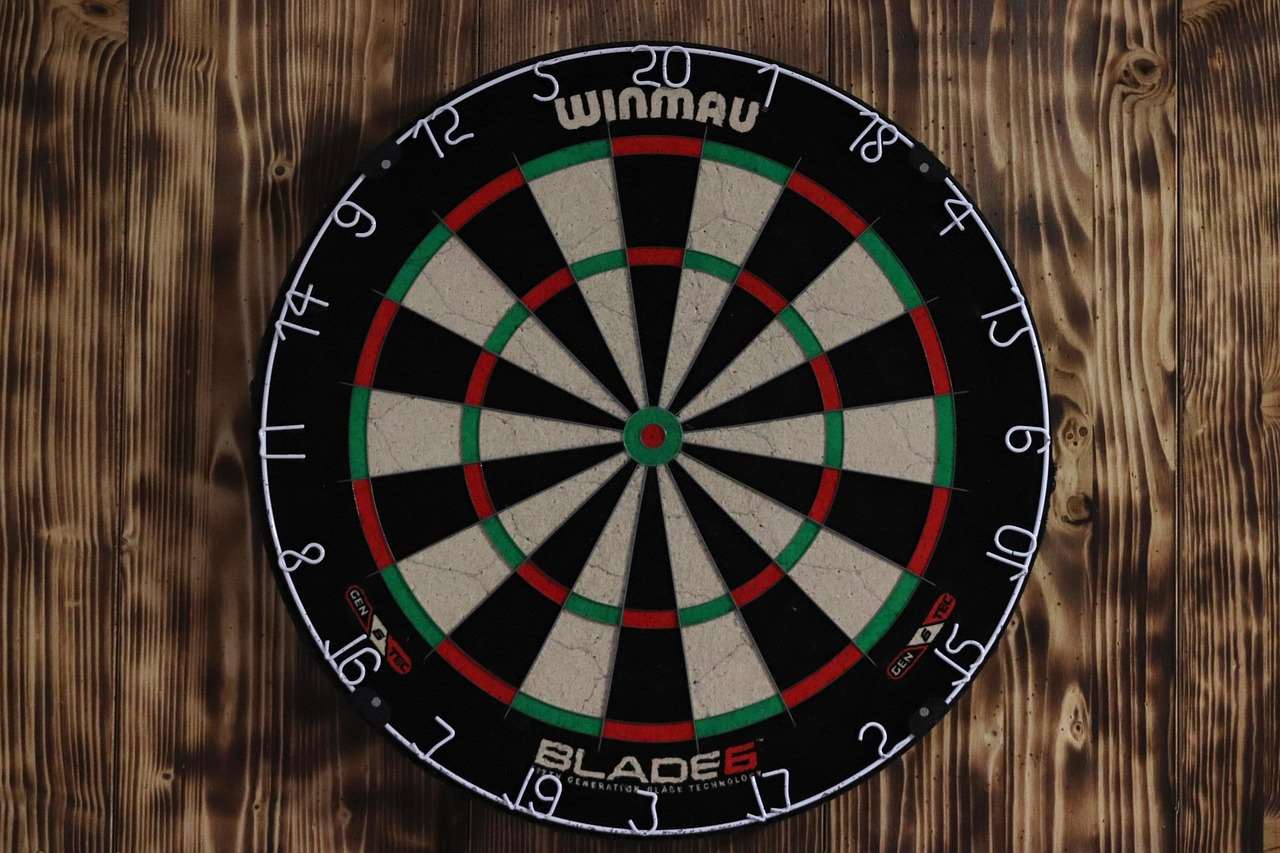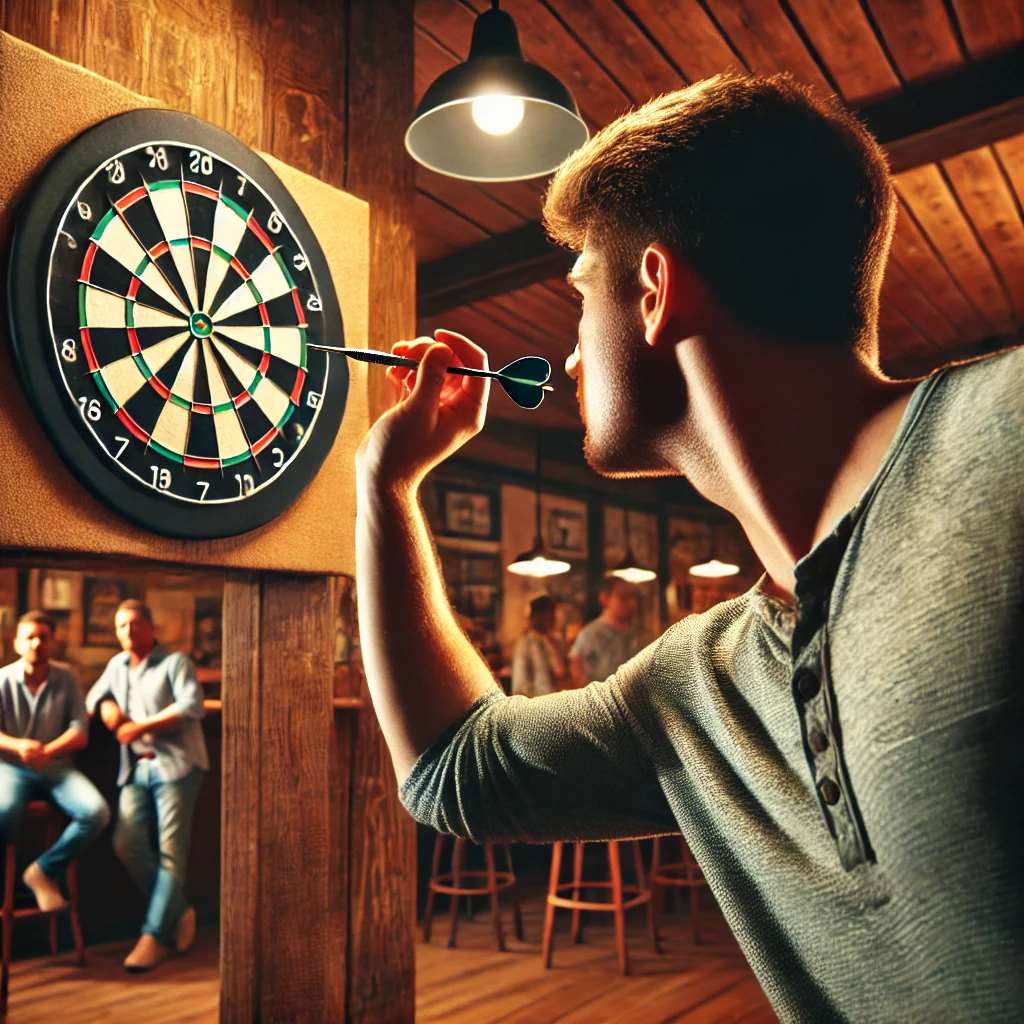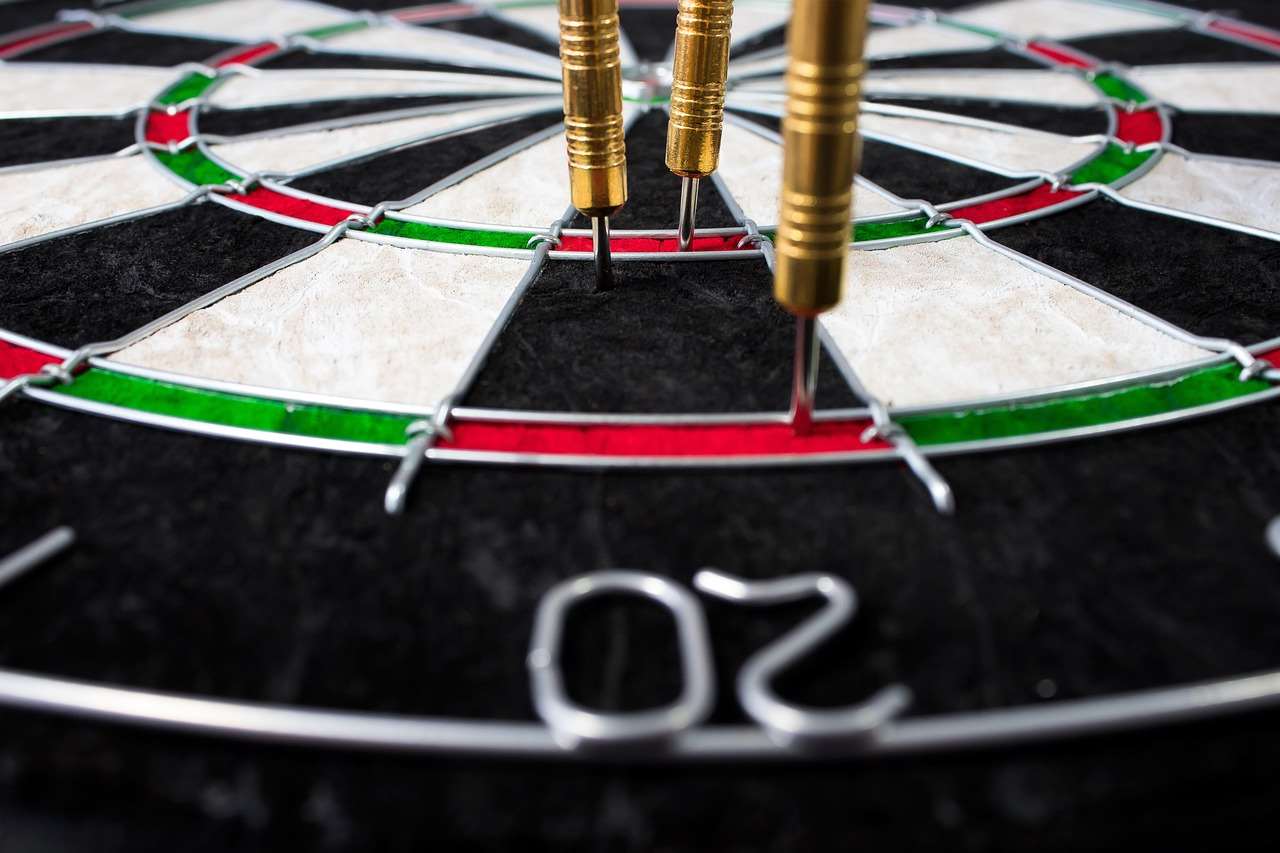Adapting darts rules for beginners is crucial for making the game accessible and enjoyable. By simplifying scoring, adjusting distances, and focusing on fun variations, you can create a positive introduction to darts. This article will explore several ways to modify the standard rules, making the game easier to learn and more engaging for newcomers.
⚠️ Still Using Pen & Paper (or a Chalkboard)?! ⚠️
Step into the future! The Dart Counter App handles all the scoring, suggests checkouts, and tracks your stats automatically. It's easier than you think!
Try the Smart Dart Counter App FREE!Ready for an upgrade? Click above!
Why Adapting Darts Rules for Beginners is Important
The standard game of darts, while exciting, can be daunting for beginners. The complex scoring system, the precision required, and the pressure of hitting specific targets can be overwhelming. Adapting darts rules makes the game more approachable, encouraging new players to stick with it and develop their skills. It’s about creating a positive and rewarding experience that fosters a love for the game.
Furthermore, modified rules allow players of different skill levels to compete fairly and have fun together. This is particularly important in social settings or when introducing children to the game. By adjusting the game to suit the players, you ensure everyone feels included and enjoys the experience.

Simplified Scoring Systems for New Players
One of the first things to consider when adapting darts rules for beginners is simplifying the scoring system. Traditional darts involves complicated calculations, especially when trying to finish a game of 501. Here are some alternative approaches:
- Target Score: Instead of starting at 501 or 301, set a much lower target score, such as 101 or even 51. This reduces the complexity of the game and allows beginners to experience the thrill of finishing more quickly.
- Round Robin Scoring: Award points based on who scores the most in each round. This eliminates the need to subtract from a starting total and focuses on hitting the board consistently.
- Simplified Out Chart: Instead of requiring players to know all the possible checkouts, provide a simple out chart or list of suggested combinations. This helps them learn the scoring system gradually.
- Ignore Doubles and Trebles: Initially, count all darts in a segment as single points. This removes the added pressure of hitting specific sections of the board. You can introduce doubles and trebles later as players improve.
Remember, the goal is to make the game accessible and fun. Don’t be afraid to experiment with different scoring methods until you find one that works best for your group. Learning the Basic Darts Fundamentals for Beginners can greatly improve a player’s understanding of the game.
Adjusting the Throwing Distance for Comfort
The regulation throwing distance in darts is 7 feet 9 1/4 inches (2.37 meters). However, this distance can be challenging for beginners, especially children or those with limited arm strength. Adapting darts rules can involve shortening the throwing distance to make the game more comfortable and accessible.
- Shorter Oche: Reduce the distance by a foot or two to allow players to throw with more control and accuracy. You can gradually increase the distance as their skills improve.
- Marked Distances: Clearly mark different throwing distances on the floor to accommodate players of varying abilities. This allows everyone to participate comfortably and fairly.
- Consider Seated Darts: For players with mobility issues or those who prefer a more relaxed approach, consider allowing them to throw from a seated position. Adjust the throwing distance accordingly.
By adjusting the throwing distance, you create a more inclusive and enjoyable experience for all players. It’s important to prioritize comfort and accuracy over strict adherence to regulation standards.

Fun Dart Game Variations with Modified Rules
Beyond the standard 501 and 301 games, there are many fun dart game variations that can be easily modified for beginners. These games often have simpler rules and focus on specific skills, making them ideal for learning and practice. Here are a few examples:
- Around the Clock: Players must hit each number on the dartboard in sequence, starting with 1 and progressing to 20. Modify the rules by allowing multiple attempts per number or by reducing the number of rounds required.
- Cricket: A strategic game that involves claiming numbers and scoring points. Simplify the rules by reducing the number of numbers required to be claimed or by eliminating the need to close out numbers.
- Killer: Each player gets a number and must score three hits on that number to become a “killer.” Killers can then score on other players’ numbers. Modify the rules by giving players more lives or by reducing the number of hits required to become a killer.
- Baseball: Players throw at specific segments of the board to score “runs.” Simplify the rules by focusing on hitting the general area of the required segments, rather than requiring precise hits.
Exploring these Fun dart game variations with modified rules can keep beginners engaged and motivated. Remember to adjust the rules to suit the skill level of the players, focusing on fun and participation.
Using Larger or Softer Darts for Safety and Ease of Use
For very young children or those who are hesitant about using sharp darts, consider using larger or softer darts. These darts are often made of plastic or foam and are designed to be safer and easier to handle.
- Magnetic Dartboards: These dartboards use magnetic darts, eliminating the risk of sharp points. They are ideal for young children or for playing in areas where safety is a primary concern.
- Velcro Dartboards: Similar to magnetic dartboards, velcro dartboards use darts with velcro tips that stick to the board. These are another safe and fun option for beginners.
- Larger, Heavier Darts: Larger darts are easier to grip and throw accurately, especially for those with smaller hands or limited dexterity. Heavier darts also tend to fly straighter, making them more forgiving for beginners.
Prioritizing safety and ease of use can help beginners feel more comfortable and confident while playing darts. This can lead to a more positive and enjoyable learning experience.

Incorporating Handicap Systems to Level the Playing Field
When playing with mixed-level players, it’s important to incorporate handicap systems to level the playing field and ensure everyone has a chance to win. This is another important aspect of adapting darts rules for beginners.
- Point Handicaps: Give weaker players a head start by deducting points from their starting score. For example, a beginner might start at 401 while a more experienced player starts at 501.
- Target Handicaps: Allow weaker players to aim for larger targets or to count certain areas of the board as double or triple points.
- Extra Darts: Give weaker players an extra dart or two per round.
- Adjusted Out Requirements: Allow weaker players to finish on any number, while requiring more experienced players to finish on a double.
Implementing How to make darts fairer with handicap rules not only promotes fairness but also encourages beginners to improve their skills. It creates a more competitive and engaging environment for all players.
Focusing on Fun and Encouragement Over Strict Rules
Ultimately, the most important aspect of adapting darts rules for beginners is to focus on fun and encouragement over strict adherence to the rules. Create a relaxed and supportive atmosphere where players feel comfortable making mistakes and learning at their own pace.
- Positive Reinforcement: Offer praise and encouragement for good throws, even if they don’t hit the intended target.
- Lighthearted Competition: Emphasize the social aspect of the game and avoid putting too much pressure on winning.
- Flexible Rules: Be willing to bend the rules or make adjustments as needed to ensure everyone is having fun.
- Celebrate Progress: Acknowledge and celebrate even small improvements in players’ skills.
By prioritizing fun and encouragement, you can create a positive and rewarding experience that fosters a love for the game of darts. This is especially important when introducing children or newcomers to the sport.

Creative Training Exercises to Develop Skills
Beyond simply playing games, incorporating specific training exercises can help beginners develop their skills more quickly. These exercises can be modified to suit different skill levels and can be made fun and engaging.
- Bullseye Practice: Focus on hitting the bullseye repeatedly. Start with a shorter throwing distance and gradually increase it as accuracy improves.
- Number Targeting: Practice hitting specific numbers on the dartboard, such as 20, 19, or 18. This helps improve accuracy and consistency.
- Checkout Drills: Practice common checkout combinations, such as 40 (double 20) or 32 (double 16). This helps players become more familiar with the scoring system.
- Grouping Practice: Focus on throwing three darts in a tight group, even if they don’t hit the intended target. This helps improve consistency and control.
These training exercises can be incorporated into practice sessions or used as mini-games to keep things interesting. Remember to provide positive feedback and encouragement to help beginners stay motivated.
Adapting Darts Rules for Different Settings and Spaces
The rules of darts can also be adapted to suit different settings and spaces. For example, if you’re playing in a small room, you might need to shorten the throwing distance or use a smaller dartboard. Similarly, if you’re playing outdoors, you might need to adjust the rules to account for wind or uneven surfaces. Adapting darts rules for small spaces: tips and tricks becomes crucial in such situations.
- Portable Dartboards: Consider using a portable dartboard that can be easily moved and set up in different locations.
- Shorter Throwing Distances: Adjust the throwing distance to suit the available space.
- Alternative Scoring Systems: Use alternative scoring systems that are less dependent on precise throws.
- Outdoor Considerations: Shield the dartboard from wind or use heavier darts to improve accuracy in outdoor settings.

Conclusion
Adapting darts rules for beginners is essential for creating a fun, accessible, and rewarding experience for new players. By simplifying scoring, adjusting distances, using safer darts, incorporating handicap systems, and prioritizing fun over strict rules, you can foster a love for the game and encourage beginners to continue developing their skills. Remember to be flexible, encouraging, and supportive, and always prioritize enjoyment. Now that you know how to adapt the rules, grab some friends, set up a board, and start playing! Ready to take your beginner-friendly dart setup to the next level? Explore our range of dartboards and accessories designed specifically for ease of use and safety.
Hi, I’m Dieter, and I created Dartcounter (Dartcounterapp.com). My motivation wasn’t being a darts expert – quite the opposite! When I first started playing, I loved the game but found keeping accurate scores and tracking stats difficult and distracting.
I figured I couldn’t be the only one struggling with this. So, I decided to build a solution: an easy-to-use application that everyone, no matter their experience level, could use to manage scoring effortlessly.
My goal for Dartcounter was simple: let the app handle the numbers – the scoring, the averages, the stats, even checkout suggestions – so players could focus purely on their throw and enjoying the game. It began as a way to solve my own beginner’s problem, and I’m thrilled it has grown into a helpful tool for the wider darts community.